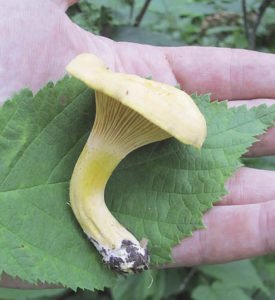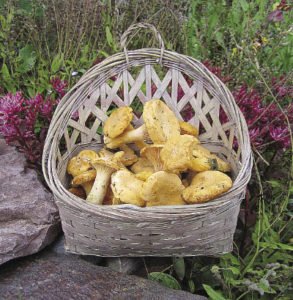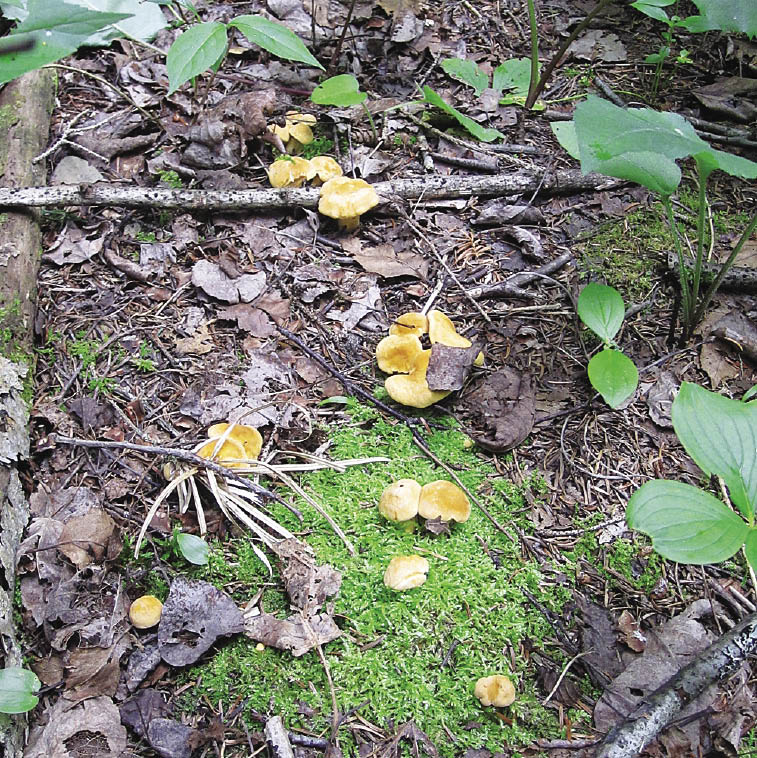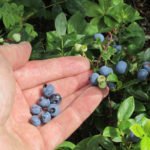Chanterelles are a powerful distraction. In July, I spend hours walking through the woods and staring at the ground, oblivious to mosquitoes and horseflies, in search of the butter-yellow mushrooms. And I find what I seek. Nearly every night we have butter-sautéed chanterelles for supper. And yes, they are that good.
Along the North Shore, chanterelles appear in July and provide good pickings for a few weeks. In a wet year, you may find edible chanterelles into September, although it is more common for picking to end during August. Chanterelles are easy to identify, easy to find, abundant and, best of all, delicious.
I watch for chanterelles after a good rain. They consistently appear in a couple places in my yard and provide a convenient barometer for local picking. Out in the woods, I find chanterelles in the same places year after year. Since a mushroom is the fruiting body of an unseen fungus, perhaps they are produced annually, like apples. That said, when out picking I leave a few mushrooms to spread their spores. Overenthusiastic picking of a patch seems to result in far fewer chanterelles the following year.

In my experience, chanterelles are found in shady forest uplands, often beneath large leaf aster, a common ground cover. Where I pick them, the tree cover is mature aspen mixed with balsam, though I have also found mushrooms growing on bare, needle-strewn ground in balsam thickets and beneath mature birch trees.
When searching for mushrooms, I walk slowly along forest paths and use my foot to sweep aside aster leaves to see what is beneath them. Chanterelles are easy to spot, because their yellow-burnished orange coloration is a bright contrast the greens and browns dominating the forest floor. If you find one, you’ll certainly find a few more. They nearly always grow in clusters or fairy rings. In fact, growing in clusters is a trait you can use to identify them.
Chanterelles are easy to identify. In addition to their distinctive yellow color, they are trumpet-shaped. Their gills flare up along the stem like fluted columns. They also have a pleasant odor, which some folks liken to apricot. If you are careful and use a good guide book or, better yet, go out with an experienced picker, you’ll discover nothing else really looks and feels like a chanterelle.
When picking mushrooms, I prefer to put them in a small wicker basket, though any bowl or bucket will do. To pick, I grasp the stem near the ground and break it off. This gives me the whole mushroom with a bit of dirt on the butt of the stem. Some pickers use a knife to cut off the mushrooms, but I find they are easier to pick by hand. Typically three or four clusters of mushrooms yield enough for a meal.

At home, I clean the mushrooms using a moist paper towel and a paring knife. Wipe off any dirt on the cap or stem with the paper towel, and then tap the cap with your fingertip to knock bits of dirt out of the gills. I use the knife to cut off the butt of the stem. Large mushrooms are sliced lengthwise for cooking. I also check to make sure the stems are solid—some ripe chanterelles contain small worms that hollow out the stems. To avoid worms, try to pick small, young mushrooms rather than the large, fully ripe chanterelles. Worm infested mushrooms should be thrown out.
We prefer to eat fresh mushrooms. A couple of years ago, we tried drying them with a dehydrator, but were unsatisfied with the taste. I recently talked to someone who said canned chanterelles are excellent, but we haven’t tried that method. You can store fresh chanterelles in the refrigerator for a week or two.
Our method of cooking chanterelles is pretty simple: we sauté them in melted butter. Vikki first cooks them for a few minutes to reduce their moisture content and then adds butter. Some folks I know add garlic to the butter. Sautéed chanterelles, to my palate, are better than morels, though I like both very much. Chanterelle mushrooms will compliment just about any meal, but they are especially tasty with chicken.
This story was originally published in the June-July 2012 issue of Northern Wilds Magazine.



